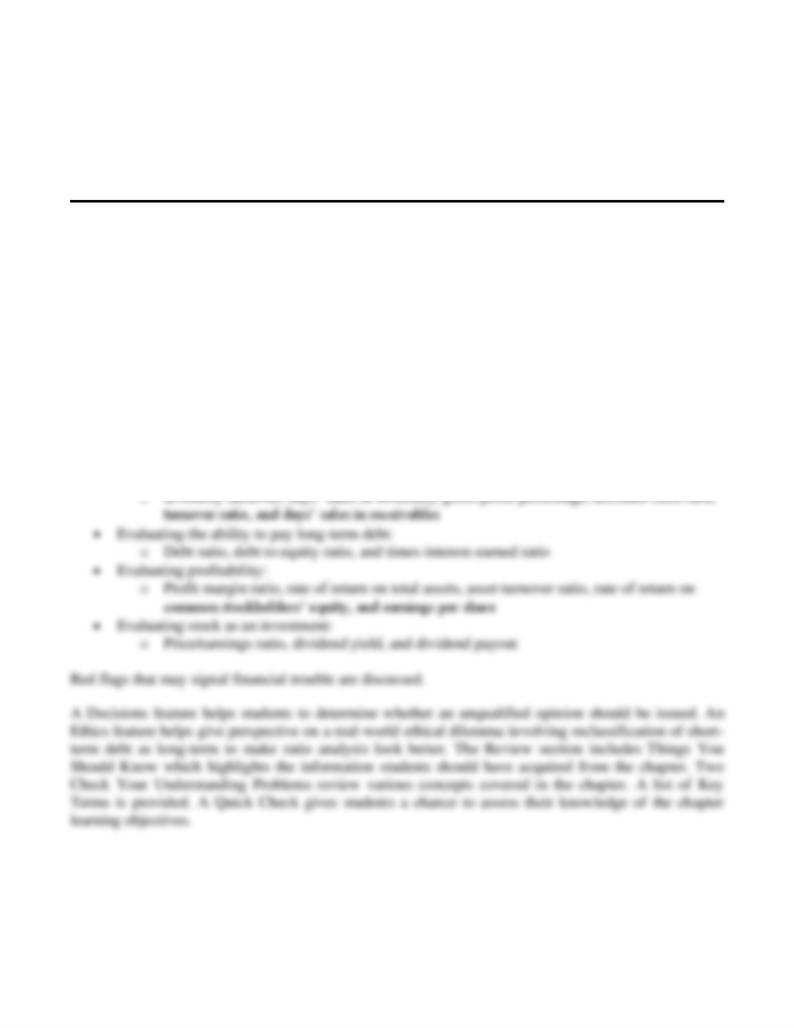
Chapter 15
Financial Statement Analysis
Chapter Overview
The chapter presents an extensive study of the three elements of financial statement analysis: horizontal,
vertical, and ratio analysis. Horizontal analysis, including both dollar changes and percentage changes,
is explained and illustrated using a comparative income statement and balance sheet. Trend analysis, a
type of horizontal analysis, is also explained and illustrated. Vertical analysis is discussed next. Use of
common-size statements, a form of vertical analysis, is presented, along with a discussion of the
usefulness of benchmarking and industry comparisons.
The next part of the chapter emphasizes ratio analysis and how ratios are used to help make business
decisions. The ratio analysis discussion is divided into these main categories:
• Evaluating the ability to pay current liabilities:
o Working capital, cash ratio, acid-test (or quick) ratio, and current ratio
• Evaluating the ability to sell merchandise inventory and collect receivables:

Chapter 15: Learning Objectives
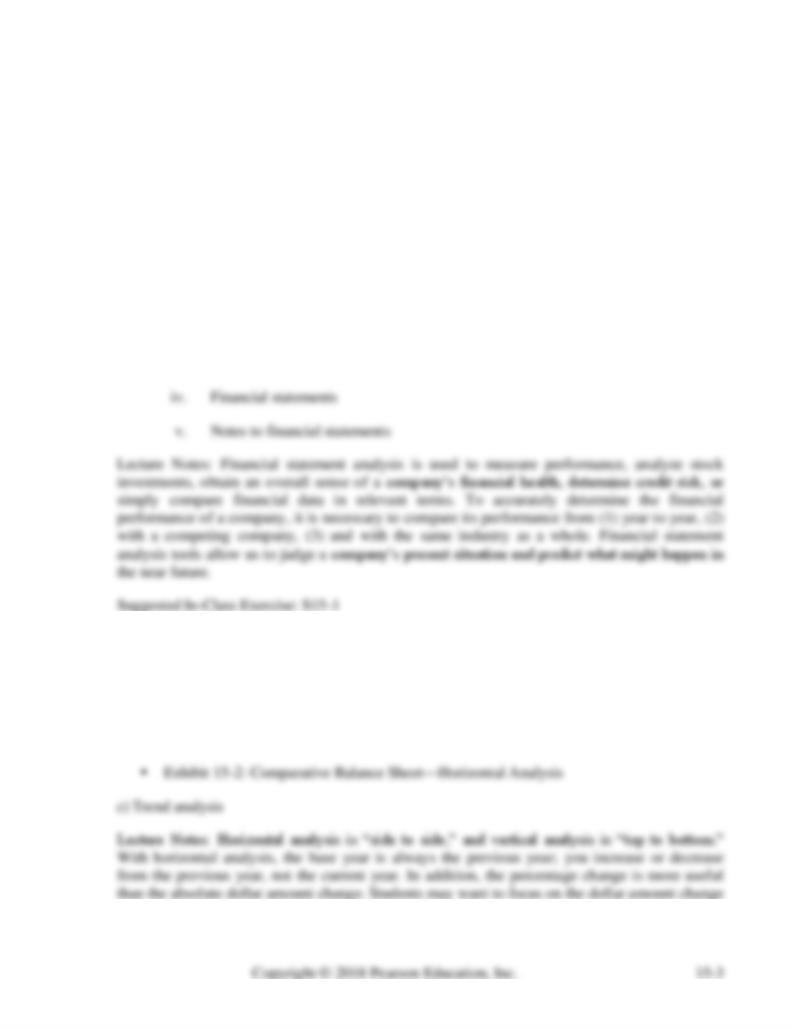
Chapter 15: Teaching Outline with Lecture Notes
LO 1. Explain how financial statements are used to analyze a business
a) Purpose of analysis
b) Tools of analysis
c) Corporate financial reports
i. Business overview
ii. Management’s discussion and analysis of financial condition and results of
operations
iii. Report of independent registered public accounting firm
LO 2. Perform a horizontal analysis of financial statements
a) Horizontal analysis of the income statement
▪ Exhibit 15-1: Comparative Income Statement—Horizontal Analysis
b) Horizontal analysis of the balance sheet
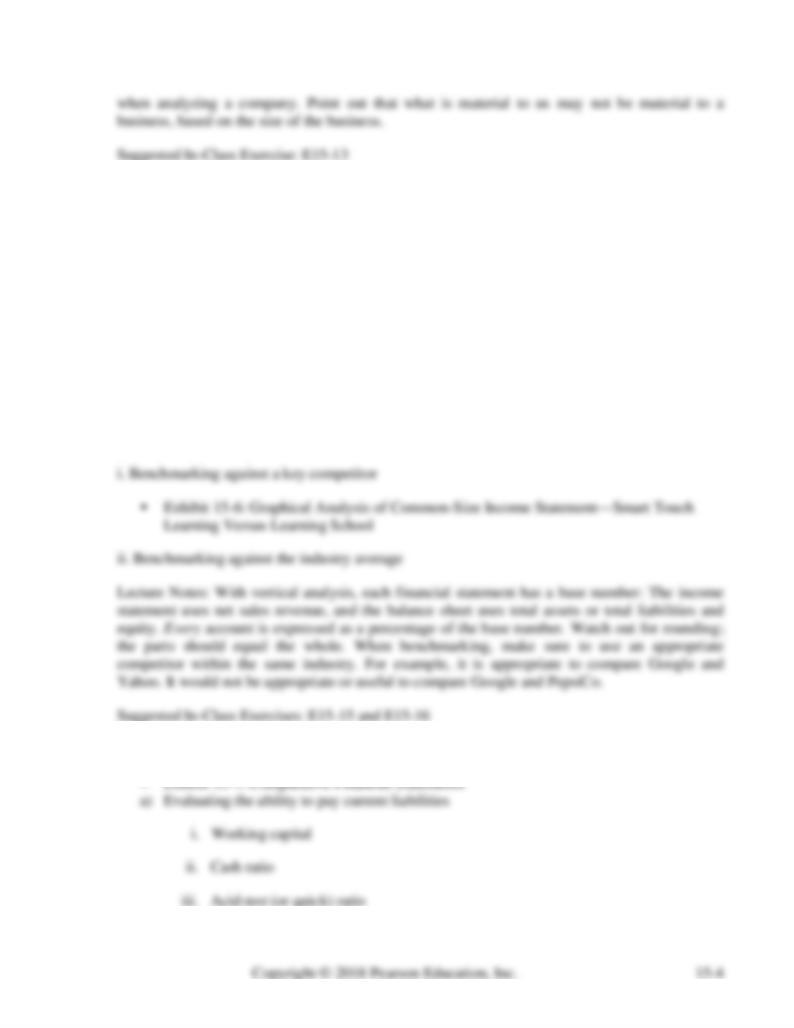
LO 3. Perform a vertical analysis of financial statements
a) Vertical analysis of the income statement
▪ Exhibit 15-3: Comparative Income Statement—Vertical Analysis
b) Vertical analysis of the balance sheet
▪ Exhibit 15-4: Comparative Balance Sheet—Vertical Analysis
c) Common-size statements
▪ Exhibit 15-5: Common-Size Income Statement—Smart Touch Learning Versus Learning
School
d) Benchmarking
LO 4. Compute and evaluate the standard financial ratios
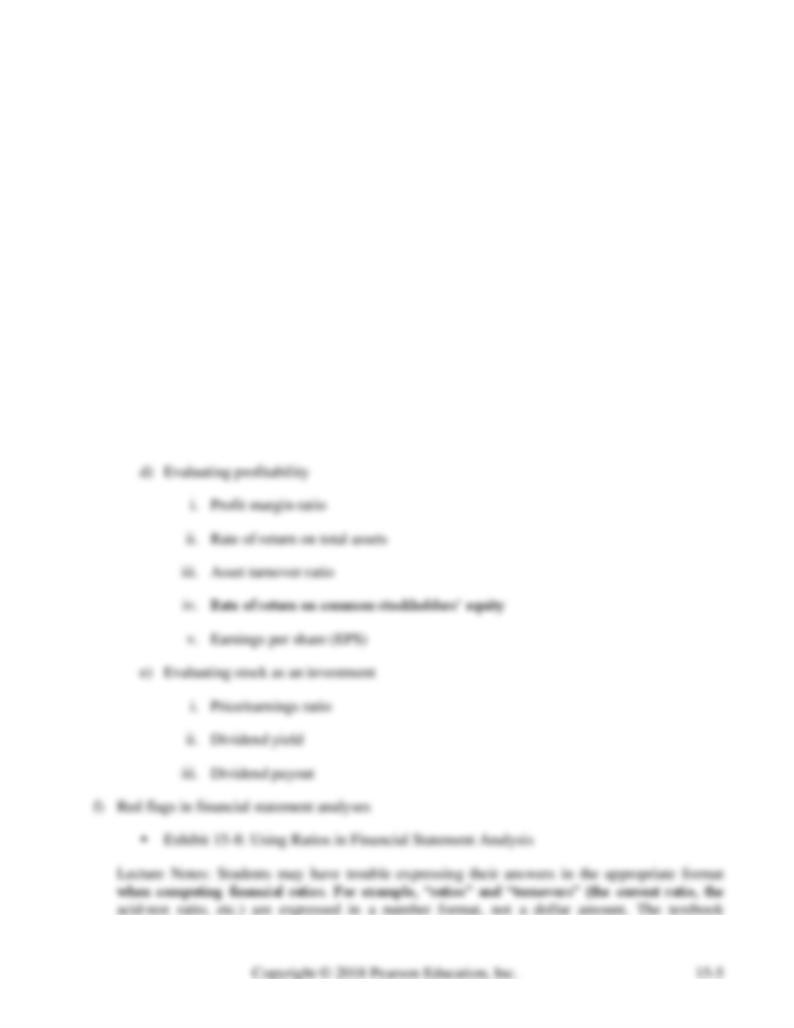
iv. Current ratio
b) Evaluating the ability to sell merchandise inventory and collect receivables
i. Inventory turnover
ii. Days’ sales in inventory
iii. Gross profit percentage
iv. Accounts receivable turnover ratio
v. Day’s sales in receivables
c) Evaluating the ability to pay long-term debt
i. Debt ratio
ii. Debt to equity ratio
iii. Times-interest-earned ratio
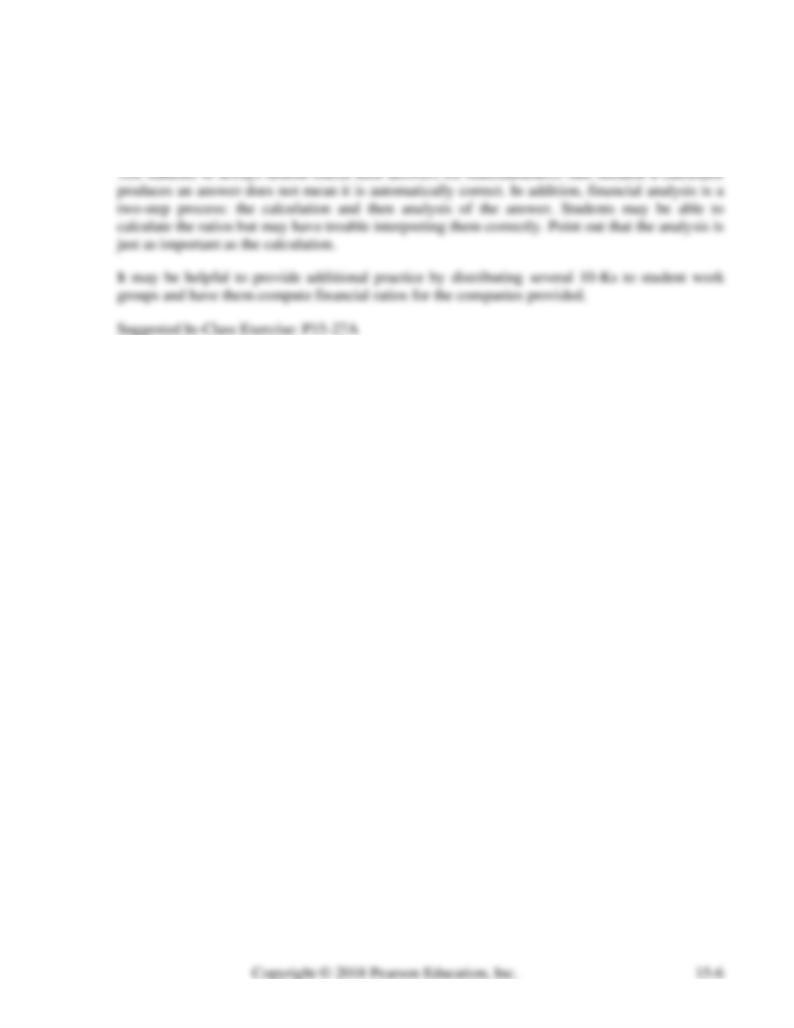
example indicates a current ratio for 2020 of 1.85, not $1.85. “Rate of return” is expressed in a
percentage format; be careful of decimal places! Point out the difference between average and
ending as some calculations use an average balance.
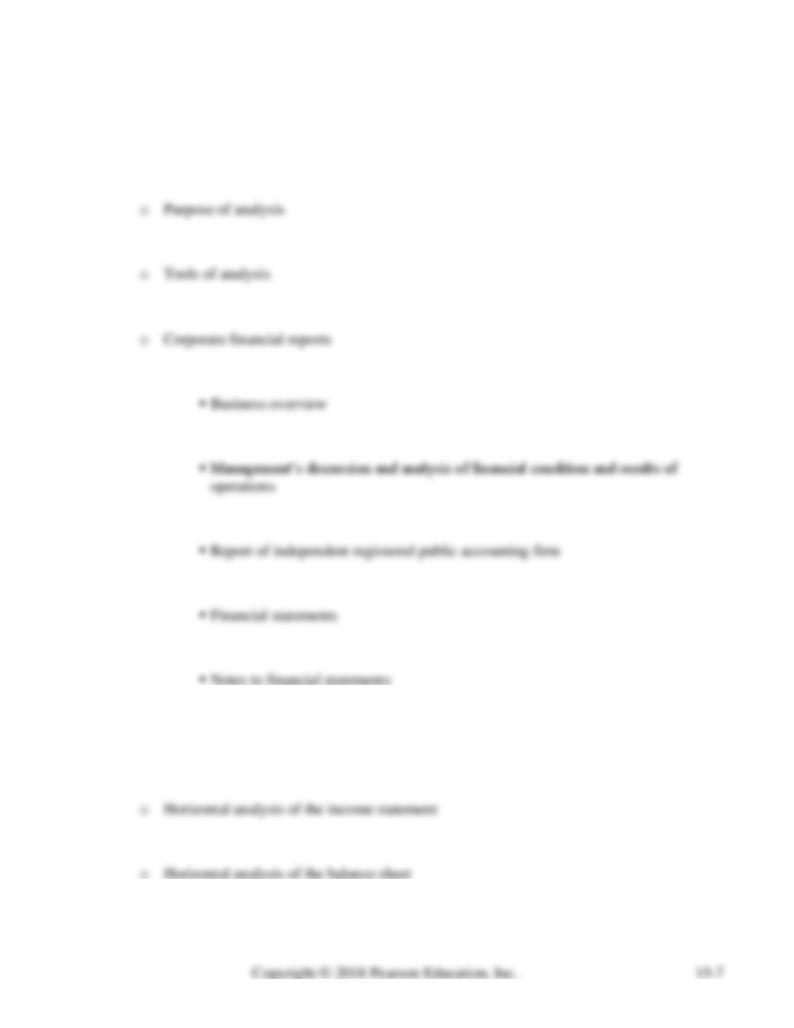
Chapter 15: Handout for Student Notes
LO 1. How are financial statements used to analyze a business?
LO 2. How do we use horizontal analysis to analyze a business?

o Trend analysis
LO 3. How do we use vertical analysis to analyze a business?
LO 4. How do we use ratios to analyze a business?
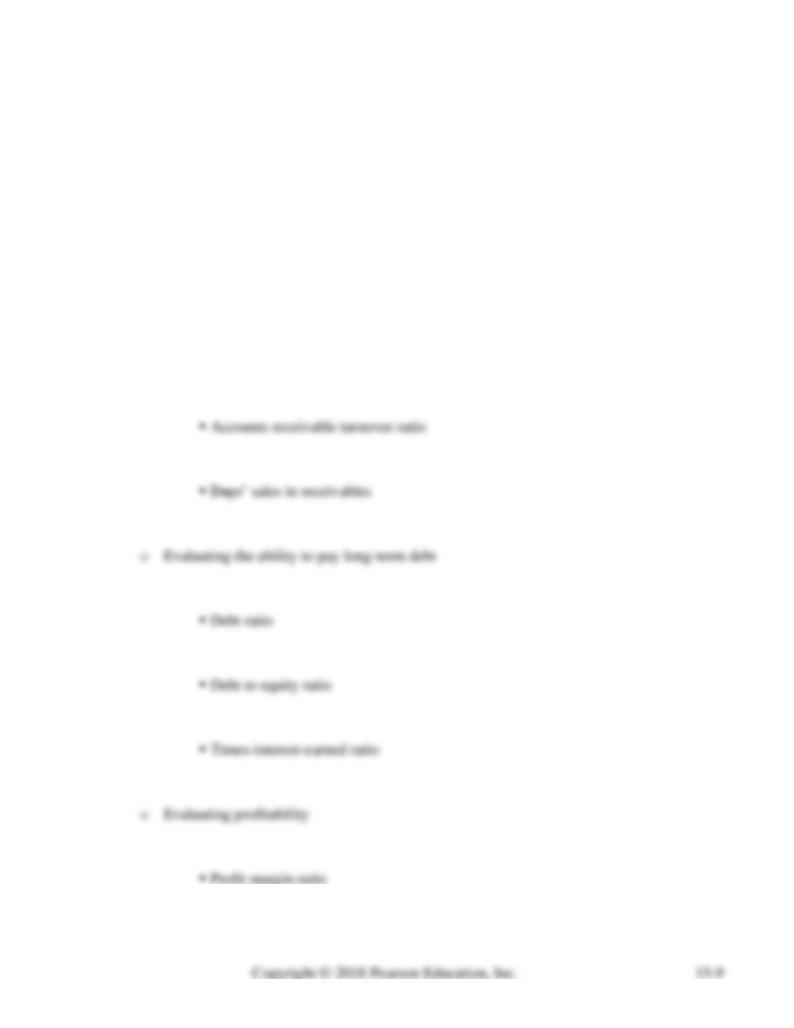
▪ Current ratio
o Evaluating the ability to sell merchandise inventory and collect receivables
▪ Inventory turnover
▪ Days’ sales in inventory
▪ Gross profit percentage
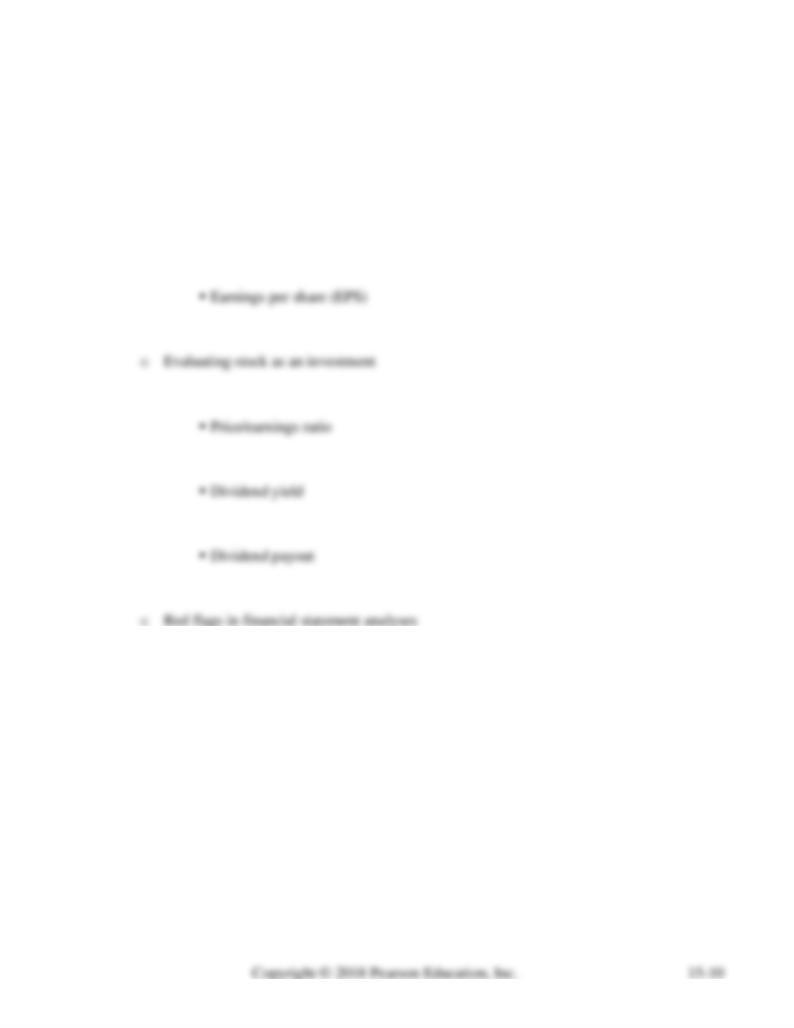
▪ Rate of return on total assets
▪ Asset turnover ratio
▪ Rate of return on common stockholders’ equity

Chapter 15: Student Chapter Summary
LO 1. Explain how financial statements are used to analyze a business
LO 2. Perform a horizontal analysis of financial statements
LO 3. Perform a vertical analysis of financial statements
LO 4. Compute and evaluate the standard financial ratios
Ratios can be used to evaluate a company’s:
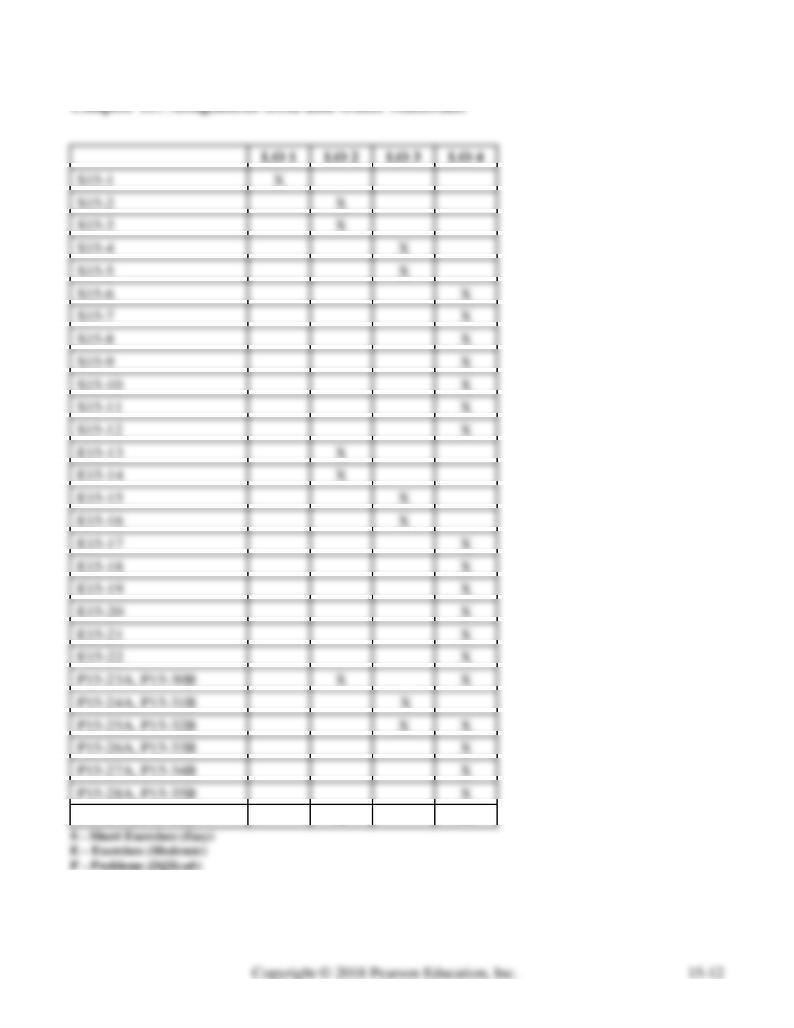
Chapter 15: Assignment Grid and Other Materials
P15-29A, P15-36B
X
X

Other End-of-Chapter Materials:
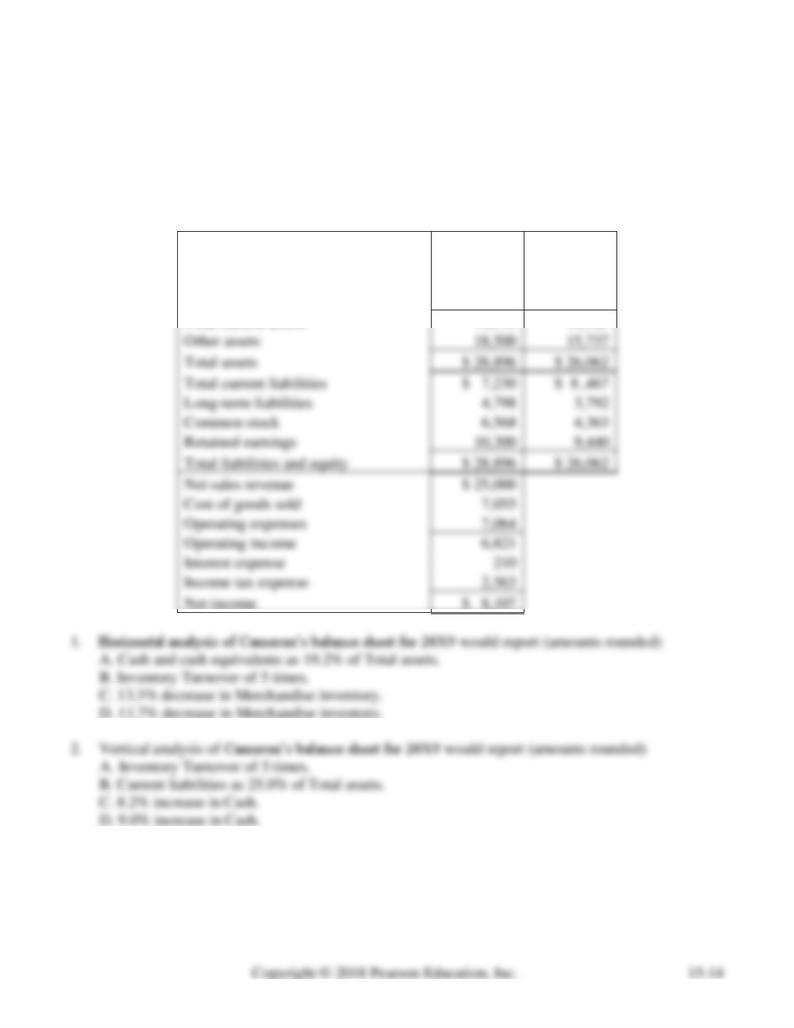
CHAPTER 15
TEN-MINUTE QUIZ
Circle the letter of the best response.
The following information applies to Questions 1–7:
Cameron’s Accounts
20X9
20X8
Cash and cash equivalents
$ 5,550
$ 5,094
Net receivables
1,813
1,611
Merchandise inventory
1,324
1,500
Prepaid expenses
1,709
2,120
Total current assets
10,396
10,325
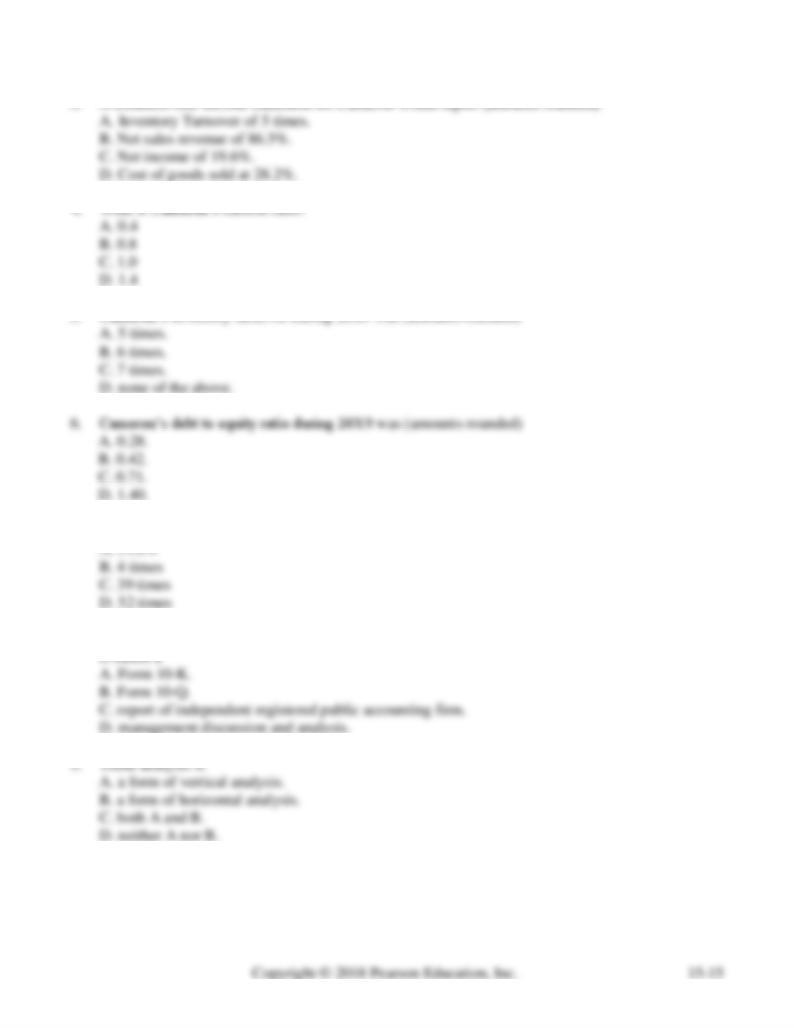
7. Which measure expresses Cameron’s times-interest-earned ratio (amounts rounded)?
8. The annual report with financial statements that is filed with the SEC by a publicly traded company


Answer Key to Ten-Minute Quiz:
1. D
Increase (Decrease)
2. B
3. D

Extra Critical Thinking Questions
5. Purchase patents from Johnson Co., paying $20 million cash.
Top management wants to know the effects of these transactions (increase, decrease, or no effect) on the
following ratios:
5.
Decrease
No effect
No effect
Fraud Case 15-1
Allen Software was a relatively new tech company led by aggressive founder Benjamin Allen. His
strategy relied not so much on producing new products as using new equity capital to buy up other

Requirements
1. What factor may have tipped off the investor group that something was wrong?
2. In what way would those investors have been harmed?
3. If Allen had attracted enough equity capital, do you think he would have been able to conceal the
scheme?